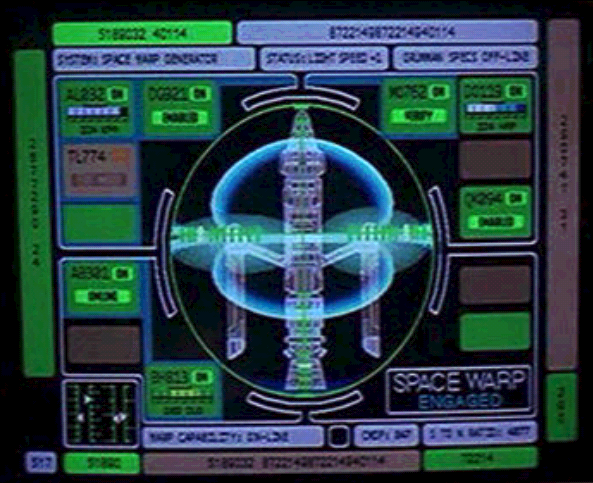Saquist
Commodore
I know Titan missiles don't have nuclear rockets. I was just trying to be open-minded to the claim that Cochrane's module might, even though it's easier to believe that the main thruster of that module is a conventional rocket using LH2 and LOX.
I see.
Earth history? First Contact takes place in 2063, and the Titan V (which doesn't exist [yet]) was probably a weapon of choice for the war fought a few years before that. So unless you have special insight into missiles that won't be built until the late 2050s, I don't see how you can make this claim.
After TITAN IV they started strapping boosters for heavier lift capability.
Progression implies if the rocket is part of the same family with augmentations. Let's say if the rocket had as LCARS implied a new engine the design would have a completely different designator (typically).
Which are throwaway technobabble to which no physical object has ever been canonically tied. It is not established whether the "intermix ratio" or formula have anything to do with the intermix chamber. For all we know it's a ratio of reactor coolant to de-ionized water that have to be mixed before delivery to the warp core's heat exchanger.
When in doubt it's always best to follow the pattern.
You're right of course and it's all just speculation on different sides of the same coin.
Well, they're ASSUMED to be warp drive systems,
or related to them in some way. Again, nothing has ever been pointed to on screen with the words "intermix chamber," it could just as easily be a fancy type of coolant system, all our assumptions notwithstanding.
It would not be consistent with the context but yes.
No, it's EXPLICITLY offered to impulse power. And the fact that the warp engines weren't working at the time because of "antimatter imbalance" clearly indicates the antimatter reactor system was not operational. If anything, this tell us that "intermix" is not necessarily part of the warp drive.
Negative:
The reactor was functional.
We have two examples of the imbalance not shutting down the core untill warp was engaged. The Core would work but at the higher output the intermix ratio changes. That's why Scotty said "intermix was set" and then said impulse power. The core was powering the impulse engines.
Indeed. Just needs to be established that what's true of the 24th century is not necessarily true of the 23rd, 22nd, or 21st.
Especially so since the configuration is different and appropriate that in the 300 years different configurations to maximize efficiency were made.
Again, no. We simply know that the intermix chamber is a device that is very important for modern engine designs. We have NO IDEA how it relates to antimatter systems, or even if it is necessary for them, or even if it can work without them. We at least know from TMP that sometimes it CAN work without antimatter. This being the case, the Phoenix can also function without antimatter.
We don't know that it can work with out antimatter.
That's wrong. That's a combined impulse/ MAR. You're jumping to conclusions on that one.
Fine. Show me a switch that says "antimatter injector" or "dilithium crystal status" and you might have something.
I can not show you what does not exist but your logic that the word warp core does not mean an antimatter reactor when applied to "intermix" I'm just not following. An intermix has never been associated with a impulse engine. TMP just doesn't count. Every other example is applied to an Matter Antimatter Reactor. Everyone.
Otherwise, there's no evidence that the warp core had any resemblance of any kind to its TNG/ENT counterparts, and circumstantial evidence--the time period and scarcity of resources--to suggest a very rudimentary, very primitive design using neither material.
I never said it resembled anything in TNG or ENT or even TMP.
What we know is that it has a component that has only been refered to in TMP and TNG antimatter reactors and it's never been related to impulse or Fusion. At this point it's an MAR device, exclusively.
You might as well suggests that the Wright Brothers powered their first flight with a turbofan engine and a fly-by-wire navigational computer.
Hyperbole:
Firstly it's nonsensical to suggest they got a Fusion reactor in that radius in stable enough conditions to launch on ICBM in make shift format or that a TITAN could even launch such an assembly. It was right after war world III such technology would have been a high commodity to the entire Earth. If he wanted to get rich he already had the one invention that would do it. Fusion Power that small could have revitalized the Earth and cured so many issues after a holocaust.
The moment someone heard about this tech it would have been taken or bought fro Cochrane.
The implication can only be warp. If any other device were mentioned with the intermix then I can see you point. But it's not.And you suggest wrong, as already demonstrated that the presence of an intermix chamber has NO implication for any particular power system.

